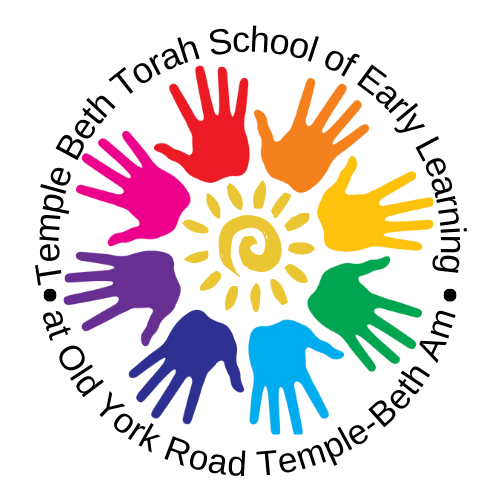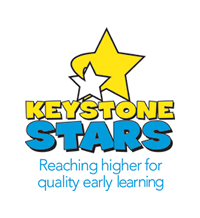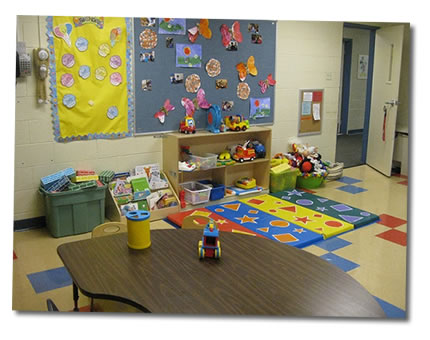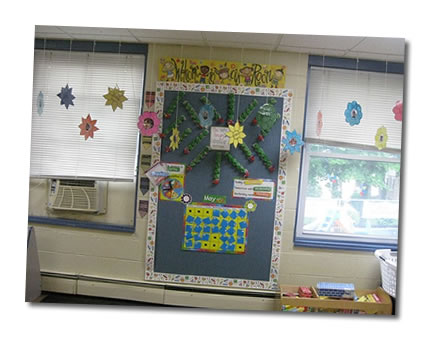Welcome to the School of Early Learning – Summer Camp
We are DHS Certified and a Keystone Stars Level 2 Program.
The Temple Beth Torah School of Early Learning at Old York Road Temple – Beth Am is busy each day nurturing, caring for and educating the children of our future. From the First Steppers to Kindergarteners, each class engages their students in a variety of activities. These activities range from interactive programs, daily specials to academic skills so that the children are always enriched and engaged. The teachers promote kindness, manners, respect and creativity. We pride ourselves on treating each child as an individual as we work towards helping them achieve their greatest potential.
We are proud to offer a variety of options both in the number of days and length of day. Our Hours are 7:30a.m.-5:00p.m. Monday- Friday.
- First-steppers (14 months – 24 months) programs are available 2, 3 or 5 days per week.
- Toddler (24 months – 30 months) programs are available 2, 3 or 5 days per week.
- Preschool program (3 & 4 year olds) offered 3 or 5 days per week.
- Pre-K/K (4 by Sept 1 & 5 year olds) program offered 5 days per week.


Our Programs
Click on an option below to learn more.
Please pardon our dust while we are working on this.
 This program is for children who are developmentally ready for a classroom setting. The class provides an opportunity for young children to experience time away from their parents in a small group setting. They will experience a language rich environment. Compete with developmentally appropriate toys, interactive music and art experiences, story time, snack and opportunities for gross motor activities. The class maintains an adult to child ratio of 1:5.
This program is for children who are developmentally ready for a classroom setting. The class provides an opportunity for young children to experience time away from their parents in a small group setting. They will experience a language rich environment. Compete with developmentally appropriate toys, interactive music and art experiences, story time, snack and opportunities for gross motor activities. The class maintains an adult to child ratio of 1:5.
Objectives:
Language Development
- Responds to verbal conversations & questions
- Points to objects when named
Emergent Literacy
- Repeats patterns in rhymes and songs
- Vocalizes sounds/responses to books being read
Creative Expression
- Uses senses when exploring
- Uses a variety of art tools
- Imitates sounds and facial expressions
Social & Emotional Development
- Recognizes family members
- Move from parallel to group play
Physical & Development
- Explores new material or events
- Stacks blocks or toys
- Manipulate peg puzzle pieces
- Becomes aware of body parts
Here is a sampling of a few of our themes:
- Seasons, Safety- school & home, Body Parts
- Animals-house (pets), colors, Nursery Rhymes, Jewish holidays
- Me, Myself & I Family, Animals- Farm, Counting
 Children in this class are two by September 1. In this class, we strive to expand communication and play skills. Children will explore shapes, colors, numbers, seasons, holidays, weather and community through games, puzzles, projects, stories, songs, finger plays, and movement activities. Holiday celebrations, Hebrew program, weekly Shabbat, music and gym are all part of the school year program.
Children in this class are two by September 1. In this class, we strive to expand communication and play skills. Children will explore shapes, colors, numbers, seasons, holidays, weather and community through games, puzzles, projects, stories, songs, finger plays, and movement activities. Holiday celebrations, Hebrew program, weekly Shabbat, music and gym are all part of the school year program.
Objectives:
Language Development
- Answers simple questions about a story, rhyme, or song
- Uses words to communicate wants and needs
Emergent Literacy
- Plays with words that sound the same or different
- Scribbles
Mathematics
- Sorts items by shape
- Begins to understand time sequence of daily routines
- Counting 1-10
Learning about the World
- Recognizes ways living things interact with the environment
- Describes what is observed
Creative Expression
- Talks about art creations
- Uses play props in dramatic play
Social & Emotional Development
- Identifies places at school that correspond to places at home
- Participates in simple interactions with others
Approaches to Learning
- Makes independent choices
- Uses objects as tools
Physical Health & Development
- Uses crayons, makers, and paintbrushes with increasing control
- Begins to name & use body parts: jumping, throwing, hopping, marching
Children will expand their academic and social skills. Group games and independent self-help skills are encouraged. Numbers, shapes, colors, letter recognition, phonemic awareness, pre-math skills, daily circle time, fine motor activities, music and movement games and developmentally appropriate drawing/writing experiences are all part of their day. Holiday celebrations, Hebrew program, weekly Shabbat, music and gym are all part of the school year program.
Units/Activities – numbers, letter of the week (sound, identification, writing), seasonal concepts, Jewish holiday stories and symbols, story structure, 5 senses, dinosaurs, sink/float, community helpers, gardening, insects, board games, cooking.
Language Development
- Uses language to communicate ideas, feelings, needs and questions.
- Initiates and responds in conversation and discussion.
- Spoken sentences increase in length and grammatical complexity.
Literacy
- Begins to understand story sequence.
- Communicates through scribbling/writing.
- Exposure to letters in the alphabet
- Connects own life with related events in books.
- Progresses from using letter-like symbols to identifying familiar words.
Mathematics
- Compares quantities of two groups of objects.
- Sorts objects by color, size or shape
- Number recognition & one to one correspondence
- Duplicates and extends simple patterns.
- Combines, separates and names “how many” objects.
Science
- Utilizes different methods to solve problems.
- Classifies items that belong together.
- Discusses common properties, differences, and comparisons or objects.
- Make predictions and explanations based on past experiences.
Creative Expression
- Creates more detail drawings, paintings, and artwork.
- Moves in time to difference music rhythms.
- Names different shapes, lines, colors, forms, and materials
- Dances with control
Social & Emotional Development
- Recognizes familiar places in the community.
- Begins to understand how his or her actions affect others.
- Gains knowledge of people in community
- Takes turns in games and using materials.
Approaches to Learning
- Approaches activities with increased imagination and inventiveness
- Concentrates increasingly on tasks or interactions.
Physical Health & Development
- Develops increasing eye-hand coordination (stringing beads, using scissors)
- Becomes more self-sufficient in using tissues, washing hands, and other self-help skills.
- Grows in dexterity in using pencils, markers, and paintbrushes, scissors.
- Develops independence in hygiene and personal care.
Pre-K/Kindergarten Instruction: Our Pre-k/Kindergarten class is comprised of students who are not eligible to enter kindergarten in their public school based on missing the cut-off and those children whose families chose to enroll their children in a private kindergarten experience.
Reading:
Phonemic Awareness & Decoding
Discriminate, recall and recognize letters
Produce rhyming word pairs
Chunk words into individual sounds
Identify the beginning sounds of words
Identify the ending sounds of words
Identify and express sound/letter connection
Match words that begin with the same sound
Explore the following word families
-at, -am, -et, -en. -in, it, -op, -ut, -al, -and, -ing
Connect sounds to make words
Build a sight vocabulary consisting of the following words:
and, in, will, did, like, you, can, we, not, but, go, a, I, the
Story Structure/Comprehension
Predict what story is about using picture clues
Identify setting and characters
Understand beginning, middle and end of story
Ability to predict what happened next in a story
Create an alternative ending for a story
Talk about jobs of author and illustrator
Identify problem in a story
Identify solution in a story
Engage in discussion related to stories
Exposure to a variety forms of poetry.
Communication/Writing
Demonstrates age appropriate pincer grasps when holding writing tools
Demonstrates the ability to write upper case letters of the alphabet
Demonstrates the ability to write the lower case letters of the alphabet
Participates in journal writing in response to a prompt or shared literature experience
Utilizes invented spelling during journal writing
Demonstrate knowledge of sound/letter connection through the use of a word book- draw pictures and or write words corresponding to a particular letter.
Listening
Follows multi-step directions
Follows directions during group instructions
Follows directions during small group
Follows directions related to paper/pencil tasks
Listens when others are speaking
Speaking
Contributes in group discussions
Speaks in complete sentences
Uses descriptive words when story telling
Answers questions appropriately/ on topic
Science
Habitats/Animals
Explore animal environments
Discuss living vs. non-living
How animals protest themselvesL
How animals move (fly, burrow, and swim)
Solar System
Identify planets and their characteristics
Name the planets in our solar system
Talk about how planets may have been formed
Demonstrate the rotation of the sun, earth and moon
Explore the numbers of moons of each planet
Ability to recreate the solar system for display
Dinosaurs
Explore using a KWL chart
Understanding of meat vs. plant eaters
Participate in a dinosaur dig
Talk about the job of a paleontologist
Chart the different characteristics of dinosaurs
Nutrition
Understand the food pyramid
Sample, categorize, graph and compare food from the different food groups
Talk about and identify foods that contain large amounts of fats,
amino acids, sugar and carbs.
Identify foods that help particular parts of your body (ie. Milk/bones, carrots/eyes, etc.)
Social Studies/Safety:
Explore Friendships
Identify characteristics of friends
Identify likes and dislikes
Explore working with a partner on a task
Explore Native American & Pilgrims
Explore the food and cooking techniques
Retell and act out the voyage on the Mayflower
Prepare a feast with the children
Have a basic understanding of like then and now, travel houses, tools, food storage, etc.
Math:
Numbers 1-10
Can read numbers
Can write numbers
Identify one-to-to correspondence
Represents & understands “0”
Understands more & less
Counting
Forward beyond 100
Backwards from 20
Count by 2’s, 5’s & 10’s
Explore symmetry of objects
Sorting Positions & Patterns
Explore block patterns
Sort objects based on attributes
Identify and label attributes
Create and extend AB patterns
Create and extend ABBA, AABB, ABC patterns, etc.
Data & Graphing
Constructs a picture graph
Constructs a bar graph
Makes comparison from data
Shapes
Identifies geometric shapes
Describes attributes of shapes
Compare shapes
Fractions, Time, Money, Length, Weight & Capacity
Explore measurement
Comparing lengths
Compare heights objects
Explore/use a balance scale
Addition, Subtraction
Numbers great than 10
Understand & celebrate Jewish & secular holidays
Appreciate and embrace diversity
Identify differences in celebrations
Learn Hebrew words, numbers, family members, animals
Exposure the some everyday Hebrew phrases
Celebrate Shabbat weekly
Overall Objectives:
Language Development
Spoken sentences increase in length and grammatical complexity
Emergent Literacy
Identifying letters and letter/sound connection
Understanding that letters for words
Connects own life with related events in books
Mathematics
Basic understanding of time, measurement, addition, subtraction & money
Duplicates and extends simple patterns
Combines, separates, and names “how many” objects
Creative Expression
Creates more detailed drawings, paintings and other artwork
Moves in time to different music rhythms
Learning about the World
Exposure to languages of other cultures
Social and Emotional Development
Gains knowledge of people in the community
Takes turns in games and using materials
Approaches to Learning
Growth in eagerness to learn and discuss a wide range of topics
Increased ability to set goals and follow through
Physical Health & Development
Develops independence in the area of hygiene and personal care
Shows growth in dexterity while using pencils, markers and paintbrushes
